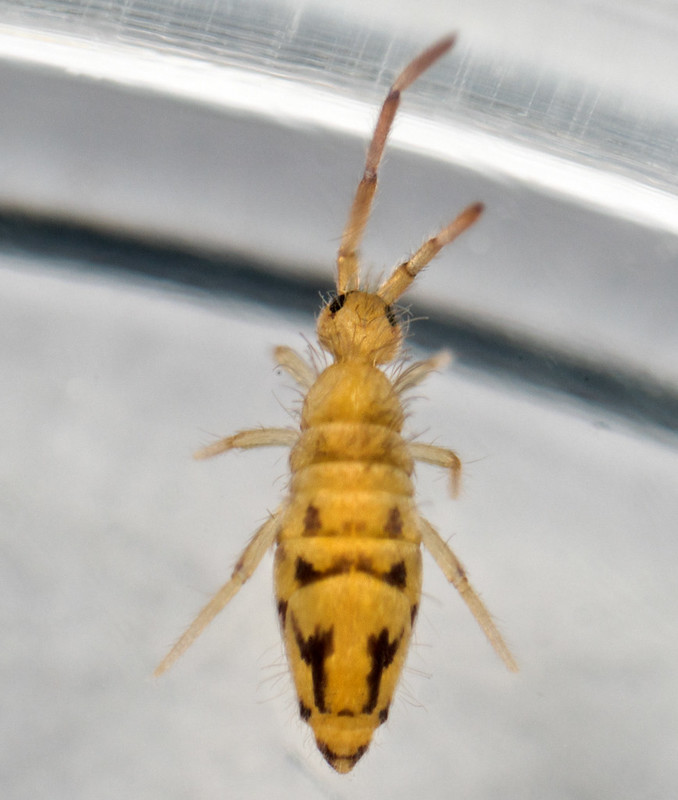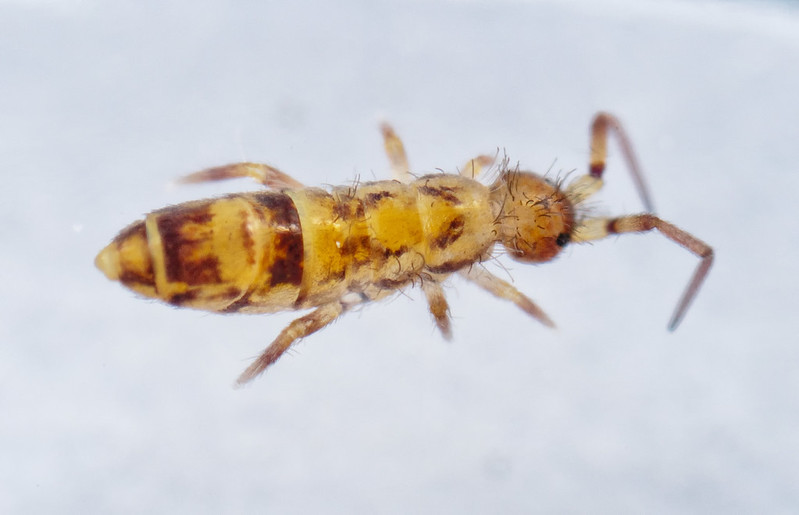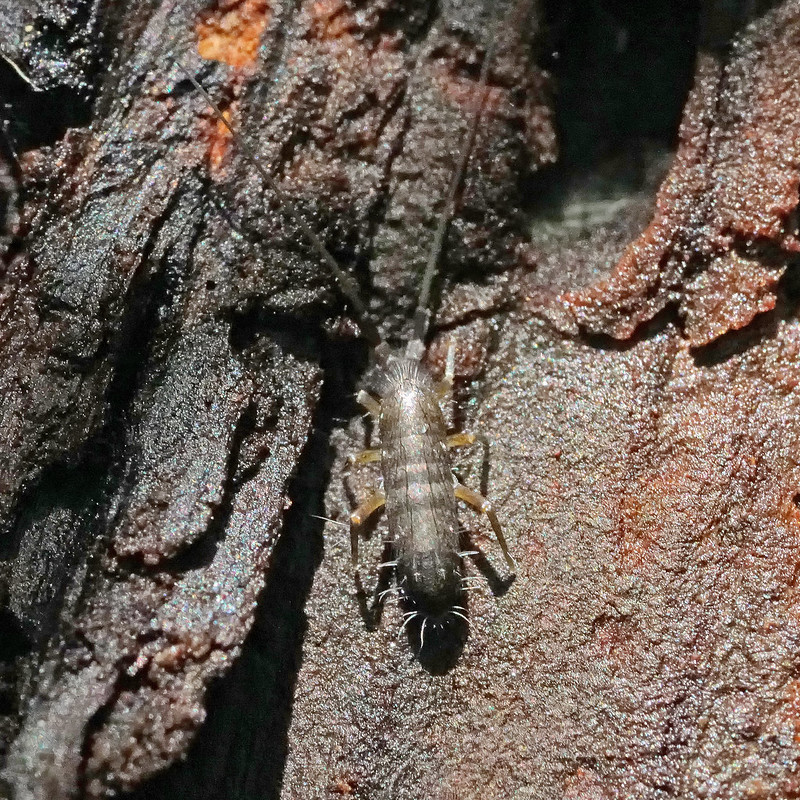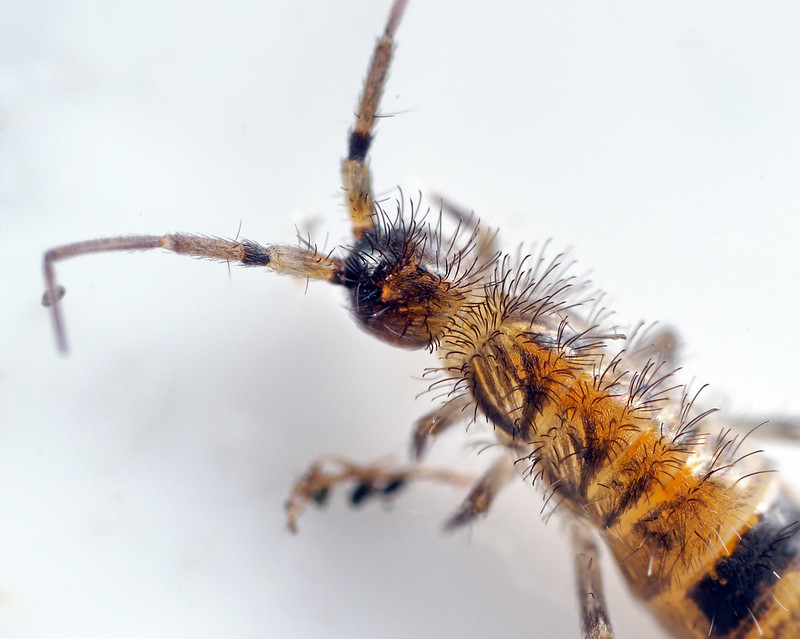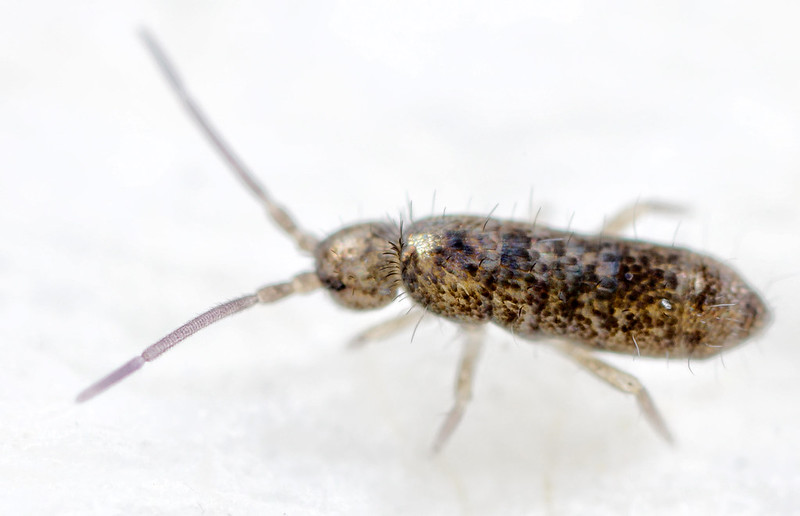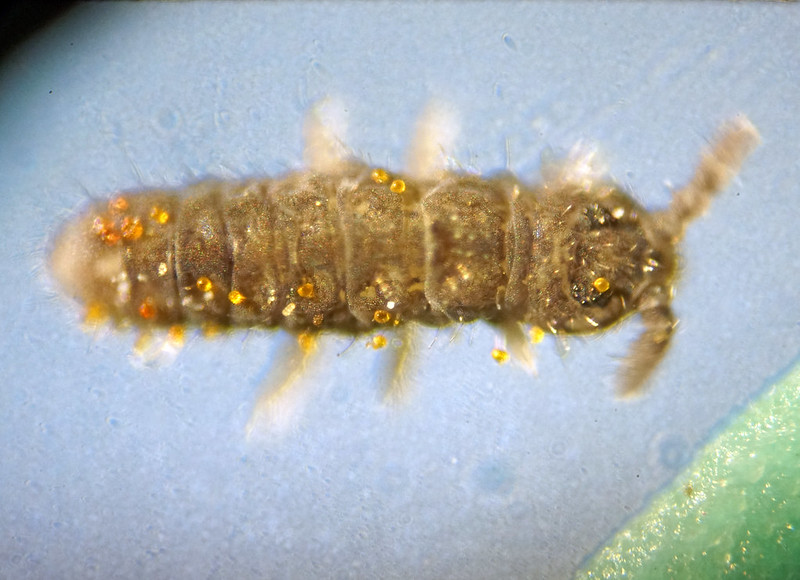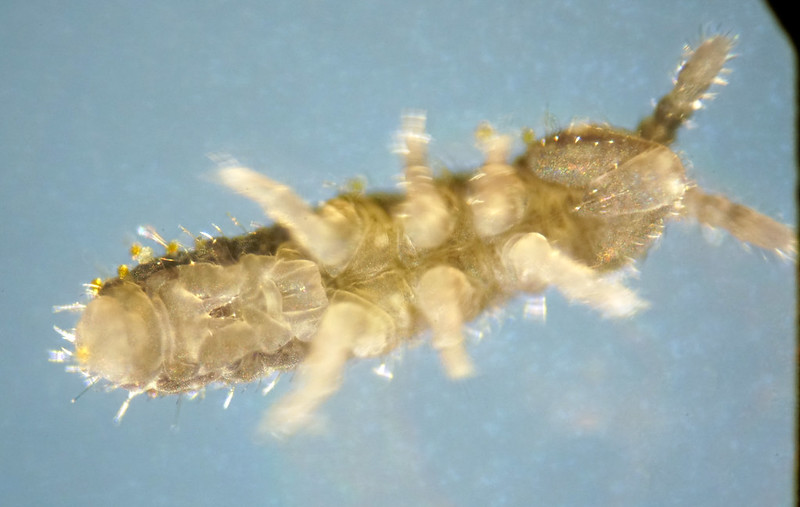Sweeping vegetation near the base (where there was most moisture) yielded abundant Entomobrya nicoleti and a few Orchesella cincta. As with the previous day, juvenile populations containing mostly immature stages:
Entomobrya nicoleti juvenile:
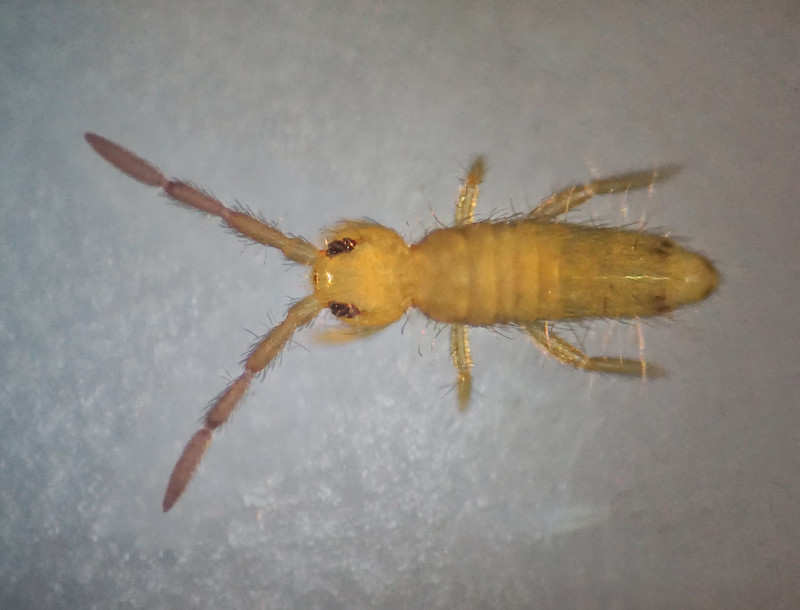
Orchesella cincta:
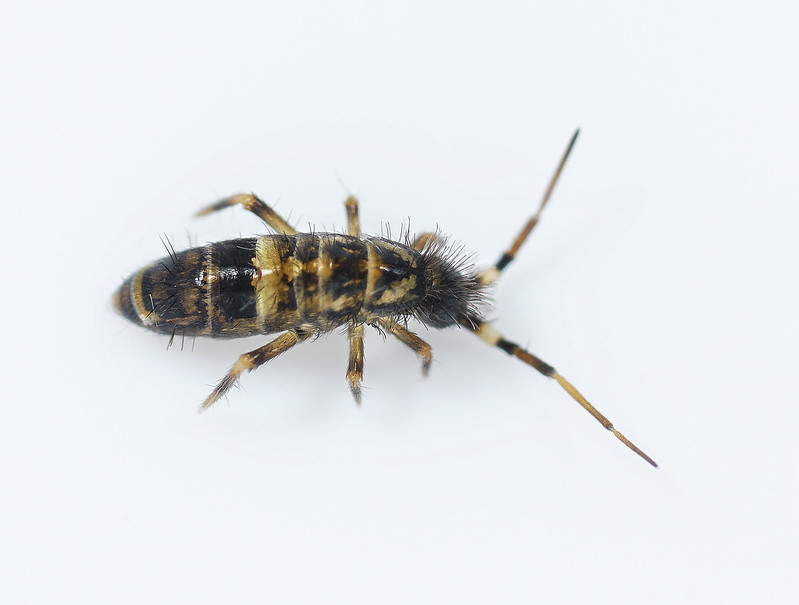
Poking around under the bark of a fallen Ash tree was also productive, giving many adult Pogonognathellus longicornis - absolute whoppers, some of the biggest I have ever seen (drought survivors):
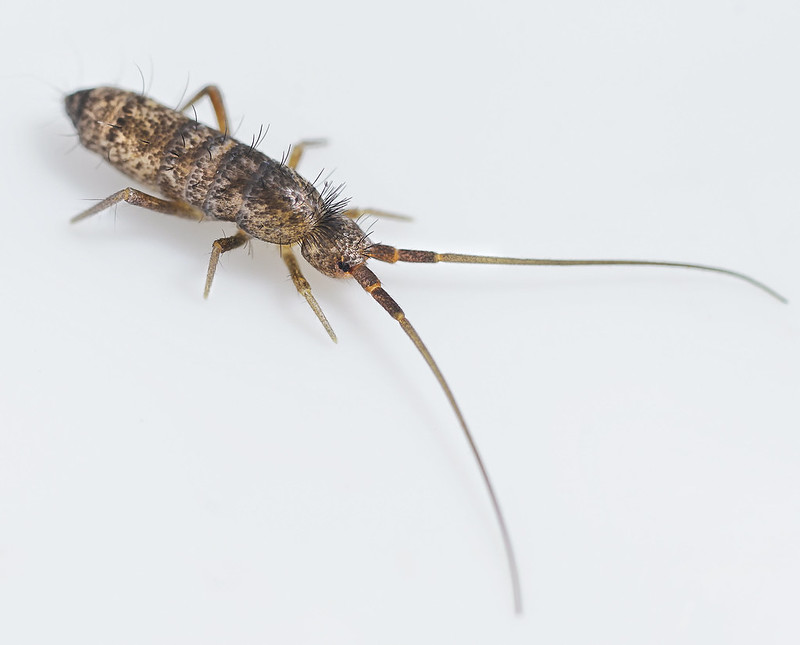
I also found a single Entomobrya multifasciata, not a species I see very often:
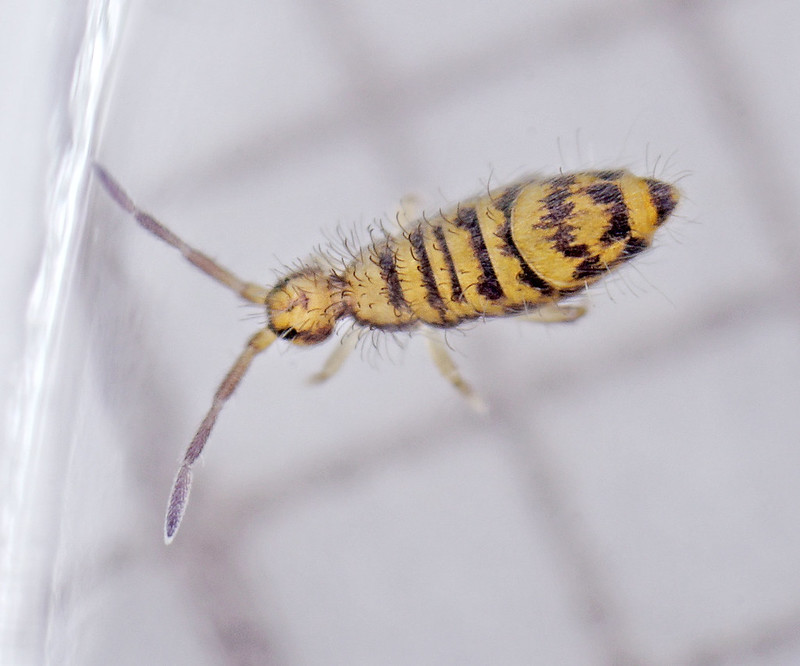
Overall, quite a productive outing and once again, no globular species recorded post-drought.
